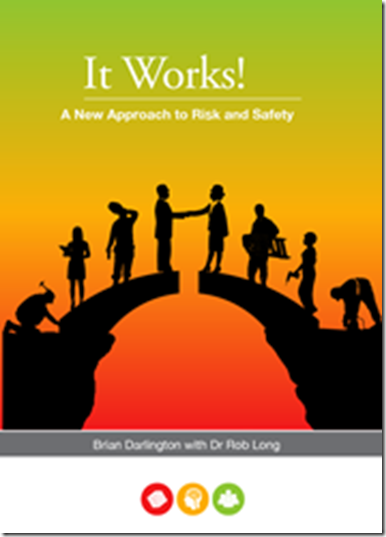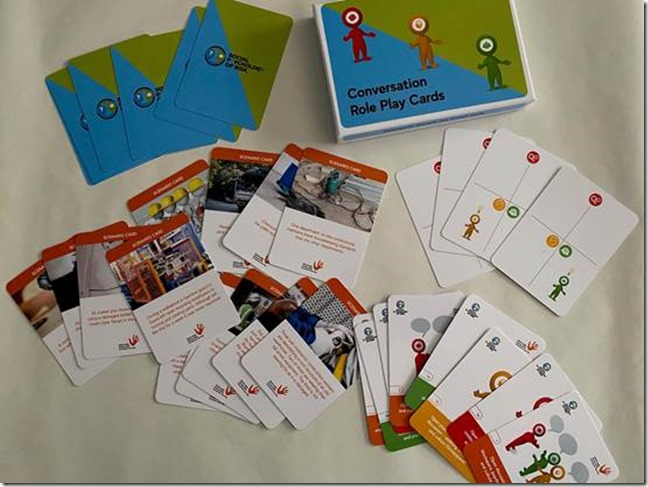How Effective Are Your Conversations About Risk?
One of the reasons why Safety is so obsessed with: paperwork, systems and audits, is that it is so poor at conversation. In the Social Psychology of Risk (SPoR) we have conducted thousands of workshops on conversation skills and not one risk and safety person has demonstrated even the slightest competence in the basics of conversation. When it comes to the fundamentals of helping, listening, caring and conversation it seems Safety is not interested.
When we run our workshops most of what we cover is deemed ‘new’ to risk and safety people. Yet, in the helping professions most of what we do is considered a 101 introduction.
Learning to conduct a conversation about risk is not easy. Talking and telling are not conversation.
Most of the organisations we work with, take more than a couple of years to become proficient and effective in the art of conversation. Especially, when it comes to skills in listening.
Most who attend Conversations workshops have never been taught about listening, how to listen or what listening is. Unfortunately, Safety is characterized by a mindset of telling, not listening. You will find nothing globally in the risk and safety sector that promotes the power of listening. Nothing in the AIHS Body of Knowledge or Safety curriculum points towards: the art of listening, skills in helping or an ethic of care.
When it comes to safety, it’s always about numbers (https://safetyrisk.net/its-always-a-number/ ), counting, regulations, paperwork, objects and telling. The behaviourist assumption is, you have been told now you know what to do. This is a perfect assumption for development of a blaming culture.
Another assumption of risk and safety culture is that conversation is easy and doesn’t require learning. It is assumed that if you have a mouth and ears that is all that is required. Yet, in the Discipline of counselling we know it takes years to learn how to be a good listener. Who would think that another discipline apart from engineering could teach safety something about helping. One thing a Transdisciplinary approach teaches is that you don’t seek out counselling, helping or conversation from engineering. Resilience cannot be ‘engineered’.
One of the best places to start in learning about conversation and helping is the work of Gerard Egan, The Skilled Helper (https://safetyrisk.net/the-advisor-as-skilled-helper/ ). One thing is for sure, Egan is on no reading list in safety.
Soon we will be releasing book 10 in the series on risk that tells the story of a global company that has improved safety by dropping the ideology of zero and taking up the skills of conversation across the organization. It is a story of what works (https://safetyrisk.net/traditional-safety/). It is a very practical story and a story we could tell over and over. Learning SPoR changes the whole way people engage in tackling risk.
At the same time as the book release we will also be releasing sales of the Conversation Role Play Cards that help people develop skills in conversation. These are so helpful in Inductions, training programs and developing safety people as helpers. The cards are only available to people who have been trained in SPoR. Look for notification of the launch of the book and cards in the next Centre for Leadership and Learning in Risk Newsletter (https://spor.com.au/downloads/newsletter-archive/ ).
The Introduction to SPoR free offer has now be running for over a year and with great success. The next free offer will commence in June 2020 (https://cllr.com.au/product/an-introduction-to-the-social-psychology-of-risk-unit-1-free-online-module/).
The Conversation Role Play Cards are based on the triarchic model of tackling risk in: Workspace, Headspace and Groupspace (https://safetyrisk.net/safety-engagement/). It is amazing how when one shifts away from the binary dumb down approach to risk that safety improves.
When one acknowledges that humans make decisions with One brain and 3 Minds (https://safetyrisk.net/the-triarchic-mind-risk-and-safety/), safety improves.
None of the tools or skill development cards offered by SPoR are about gimmicks. All the semiotics and tools being used in organisations globally to improve risk and safety with SPoR testify that it works.
Once you drop the ideology of zero and take up a climate of helping and care, safety improves.





Rob Long says
Rob, thanks for your comments.
I think Safety has a huge challenge ahead trying to work out if it wants to be profession or just wants to be a fixing and telling industry. One thing is for sure, if you want to be effective in Headspace and Groupspace, fixing and telling ideology doesn’t work.
I wonder how long it will take poor olde Safety to work this out? Safety certainly won’t become professional until it drops zero and learns what helping is about, and stops its fixation with objects.
I find it so amusing this discourse of Safety in ‘saving lives’ when I think the opposite is the case. I think Safety is good at hiding and shifting numerics and persons so that groups like Lifeline pick up the pieces. If the ideology is zero then the trajectory can only be brutalism.
I wish you all the best at Lifeline, the profession of caring and helping indeed needs people like you but such a lost to safety.
Rob Sams says
Thanks for sharing, it caused me to reflect on the ‘learning adventure’ of the past 10 years.
After working in Safety most of my life and having a degree qualification in the same, I was set on the path of fixes and solutions, and doing what I thought was a good job – the numbers confirmed this…..
“Workspace” is important in the prevention of injury and there is plenty that an organisation can and should do in this area. I’m reminded of this regularly in my current role where we have hundreds of sites (including shops and warehouses) across the country with plenty of ‘workspace’ risks present and needing attention.
It’s working in the “Headspace” and “Groupspace” though where both the curriculum and the work of Safety is really challenged.
Now that I’ve moved to the helping industry, where we regularly meet people in crisis, some with little or no sense of hope and often with no ready solutions or fixes available, it has become obvious that if one really is to support, help and ‘be’ there for others (which I do hear people Safety suggest all the time that this is part of what it aims to do), then developing in the area of deep and active listening is essential.
The challenge though, that I’ve been learning a lot about over the past few years in Lifeline, is that listening is less about a ‘technique’ and more of a ‘way of being’. In order to deeply listen to others, without judgement and with unconditional positive regard, we must drop our own agenda and suspend the instinctive desire to fix and solve, and instead learn how to ‘attend’, be present and walk alongside others.
It’s not just Safety though; our world, where the ‘privitisation of the self’ is amplified in almost all areas of our lives, leads us too easily to ‘fixing’.
In order to ‘meet’, we have to work (hard) against all that we are taught, mostly unconsciously, about a world of happiness and good times masquerading as ‘real living’. If this is our take on the ‘good life’, we set ourselves up for disappointment.
It’s so much easier, much quicker, less messy and more efficient (in all aspects of our life) to tell, instruct and control. Contrastingly, worrying that things are not right, accepting that we are fallible and coming to grips with the idea that (paradoxically) harm, pain and hurting is part of ‘real living’, can be a difficult concept to get our heads around.
Thanks for sharing these resources and looking forward to reading the new book. There are no simple answers to complex challenges, but a willingness to learn a new way and ‘unlearn’ all that gets in the way of real meeting can be so liberating.